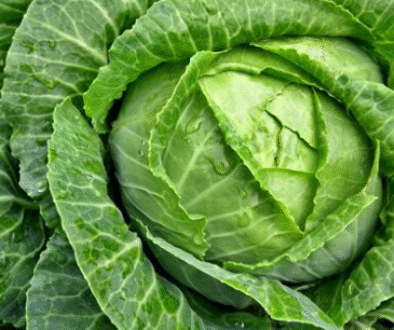Luxurious Tomato Basil Pasta Sauce
This article appeared in The Reading Eagle Newspaper on December 3, 2014 and was reprinted with permission from the author.
[column size=”1-2″ last=”0″]

[/column]
[column size=”1-2″ last=”1″]
One of the questions I hear asked most often about eating plant-based foods is “where do you get your protein?” Typically people believe that the more protein you consume, the better. This is not necessarily the case. An important distinction to consider is the difference between plant-based protein and animal-based protein. Why do people think that our bodies need so much protein? Well, about every 5 years, the Food and Nutrition Board of the Institute of Medicine (IOM) of the National Academy of Sciences in Washington, DC comes out with a report which determines the suggested guidelines that people should follow in order to minimize their risk for chronic disease.
[/column]
The most current report available stipulates that the average adult should consume between 10-35% of their calories from protein. However, that same report five years ago indicated that the recommended daily allowance for protein was just 10% for average adults. That is a big difference. Why does it matter?
In order to determine how much protein average adults really need, scientists measure and compare the amount of nitrogen we consume with the amount of nitrogen we lose. Protein turns over regularly, as the human body synthesizes new protein and gets rid of old protein, so yes, it must be replaced on a daily basis. But according to the science, the minimum daily requirement for the average adult is a mere 5% – 6% of total calories. This measurement is more than adequate, theoretically and statistically speaking, for 98% of the population. Incidentally, it turns out that people consume about 10% to 11% protein simply by eating plant-based foods. Plant protein is considered high quality protein, whereas protein from animal sources is considered of lesser quality when it comes to their amino acid profiles, an important distinction when you’re talking about the building blocks of the human body.
The bottom line is, by getting too much protein in your body, your other bodily systems have to work hard to remove the excess protein. This not only causes fatigue (the three-o-clock lull) but it’s been scientifically documented to both raise cholesterol and effectively “turn on” the biological occurrences that lead to cancer cell division.
One very easy way to incorporate more plants into your diet is to add fresh, whole foods to dinners you probably already eat.
Instead of opting for a jar of salt, I mean sauce, set aside an hour or two on your Sunday afternoon to prepare this luxurious pasta sauce from scratch, which includes not only the most obvious (tomatoes) but also carrots, celery and onion too. It’s actually a recipe that has been in my family for generations and will likely strike similarities to many families of mediterranean descent. The homemade pasta sauce recipe originates from my great-grandmother, Cecelia Spadafora, a native of Sersale which is a small village in Calabria, Italy. Although I didn’t know her personally, much of her advice has been passed along to me. One of my favorites quotes of hers comes from my Aunt Mary with regard to child rearing: “This phase is temporary, Katie, and one day hopefully you’ll sit around your table with your grown children and their children, and take pride in the legacy you’ve created.” It’s been said that the sense of smell can conjure up vivid memories. The smell of this recipe takes me straight to my mom’s kitchen and invokes the magic of childhood. I hope it will do the same for your children.
[column size=”1-2″ last=”0″]
Tomato Basil Pasta Sauce
2 Tbsp. olive oil
1 large onion
1 celery rib
1 carrot
1/4 c. fresh parsley, chopped finely
2 garlic cloves, minced
1 Tbsp. basil (or 6-8 leaves of fresh basil, chopped)
4 cups of hot vegetable stock
1/2 cup dry red wine
1 small can of tomato paste
1 large jar of crushed tomatoes (preferably that you grew in your garden and jarred yourself, but if that isn’t possible, then just buy a large can of crushed tomatoes)
Salt and pepper to taste
optional – freshly grated reggiano parmigiana for serving
[/column]
[column size=”1-2″ last=”1″]

[/column]
Chop the onion, celery, carrot, basil, garlic and parsley (this can be done in a food processor to save time). Add chopped vegetables to oil and sauté on low heat for about 10 minutes, stirring occasionally. Add the tomato paste, salt and pepper and continue to cook for another 10 minutes, stirring frequently to prevent sticking. Add crushed tomatoes and stir well to combine. While you are stirring, heat the stock in another pot. Add the hot stock and the wine slowly to the vegetable mixture to combine and then simmer for at least an hour before serving over pasta. Note: Head over to Monte Laurel or Russos for some pepperdale,



